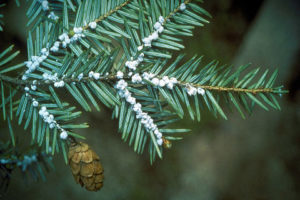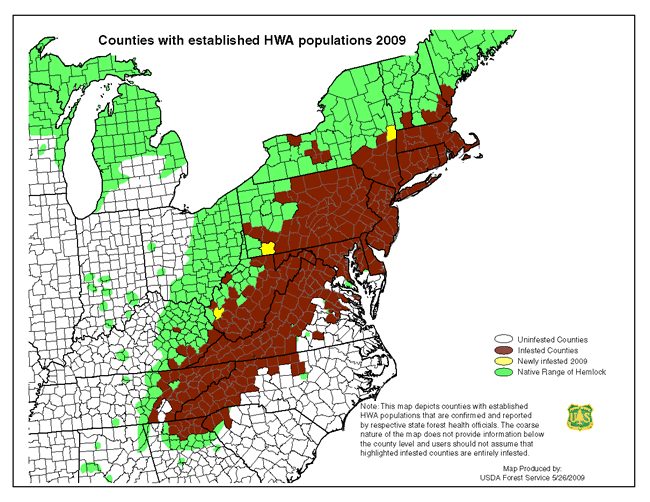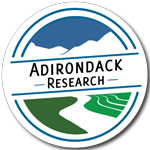We received funding from the U.S. Department of Agriculture to perform ground work to model the disease vector and hosts of hemlock woolly adelgid.
Native to East Asia, the HWA affects the Eastern hemlock, a long-lived coniferous tree found across the Northeastern US. The HWA is a type of sap-sucking insect that causes the Eastern hemlock to lose its needles while inhibiting any new growth, effectively killing the tree over a period of four to ten years (Hanavan, 2015).

Effects of the Hemlock Woolly Adelgid (HWA) like these white egg sacs may appear benevolent at first. However, over the course of 4-10 years infestations can be lethal.
HWA currently affects 414 counties in 20 US states (U.S. Forest Service, 2013). At present, the Adirondack Park’s Eastern hemlock population is largely unaffected by HWA (2 cases were reported in summer 2017), which thrives in a warmer climate that New York winters can typically support. However, as our winters get warmer, the risk for HWA spread will only get higher. Left free to spread, the HWA would wreak ecological havoc on animal and plant ecosystems across New York state which depend on the existence of the

Our current assessments for HWA proliferation in the Northeast with high risk for infestation shown in red and low risk in blue. At present, our study area (inset) is largely unaffected by HWA. However, risk for infestation is considerably higher in the lower part of the Tug Hill Plateau.
Eastern hemlock, a “foundation species,” for survival. An HWA infestation would also beget untold financial damage at local and federal levels. At its current levels, HWA incurs $100 million in residential property damage annually and is the precipitant of a steep $66 million in local government expenditures each year (Aukema et al, 2011). Our methods were designed to predict and mitigate such a costly spread in New York State.
Using airborne mapping technology, our project will map the location of Eastern Hemlock stands across New York’s forests.

